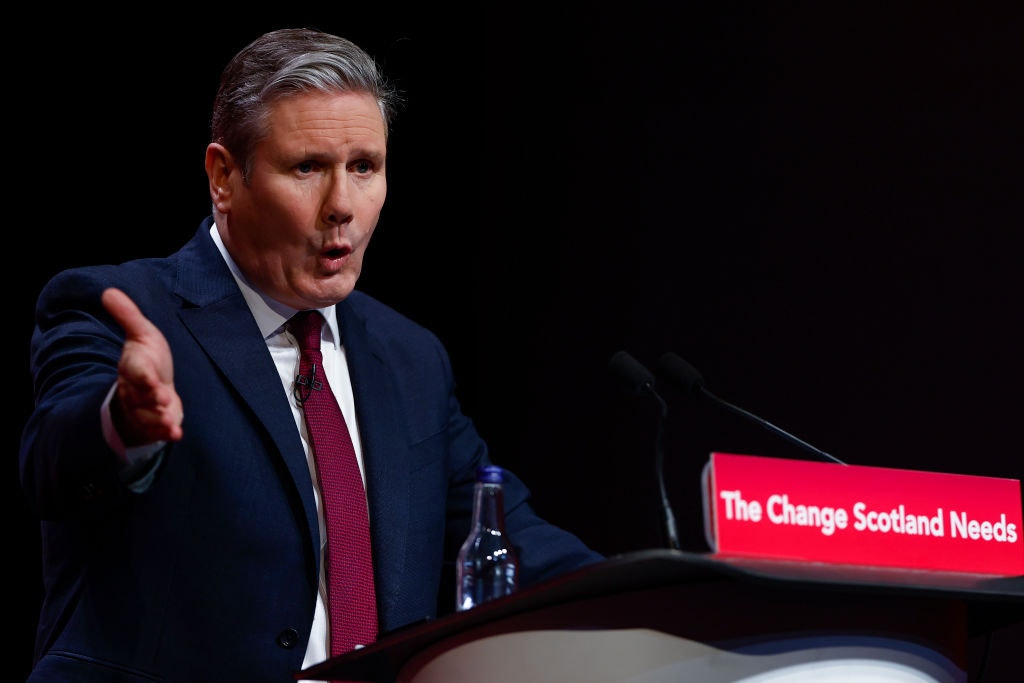A decade of economic disaster
Only one verdict is possible: Conservative rule has been a comprehensive failure
This article is taken from the April 2024 issue of The Critic. To get the full magazine why not subscribe? Right now we’re offering five issues for just £10.
Barring miracles (or an unlikely decision to hold the next general election in January 2025, the last legally-possible month), 2024 will be the final year of the present Conservative government.
Although the Conservatives were in coalition with the Liberal Democrats at the start, the period 2010 to 2024 will have been dominated by Conservative policy-making. On the economic front, only one verdict is possible: Conservative rule has been a comprehensive failure.
Output per hour worked has gone up in the 14 years, but by only 0.5 per cent a year. This is the lowest rate of increase in productivity over such an extended period since the Industrial Revolution. Inevitably, living standards have stagnated. Public debt has climbed relative to national output, up from 70 per cent in 2010 to about 100 per cent now.
The surge in inflation in 2021 and 2022 to the highest numbers for four decades was the fault of the independent Bank of England. But, astonishingly, the government has given every appearance of wanting both to take the blame for the double-digit peak and the credit for the subsequent decline back towards the target two per cent.
There is an obvious contrast with the previous Conservative government from 1979 to 1997. In that 18-year period, productivity rose by a third, and living standards advanced correspondingly.
Moreover, progress on the supply side of the economy was accompanied by strong public finances and moves towards sound money. Britain was one of only two members of the OECD to achieve a fall in the ratio of public debt to national output in that 18-year period. (The other was Norway, with its enormous tax revenues on oil and gas.) Most impressively of all, inflation — typically in the teens per cent in the 1970s — was brought down to the low single digits.
Undoubtedly, the 1979–97 Conservative government was an economic success relative to the one now ending. Indeed, a case can be made that it was the most successful post-war British government in terms of its economic record.
It broke the worrying pattern in previous post-war decades for the combinations of inflation and unemployment to deteriorate from one cycle to the next. Meanwhile the UK’s supply-side transformation — so that it became a world leader in the export of business services — occurred almost by stealth, as the government withdrew subsidies from heavy industries.
Given the contrast between the two periods of Conservative rule, opinion formers should surely start asking obvious questions. What steps did the Conservatives take from 1979 which led to the benign results? What has gone so wrong since 2010?
Strangely, these questions have not been prominent in the debate before and after Jeremy Hunt’s latest Budget. The politically alert seem instead to have taken their cue from headlines in the Daily Mail and the Telegraph. The prevailing view has been that — somehow — Hunt had to cut taxes and make voters feel better this summer and autumn than they might otherwise have done.
Tax is due to exceed 37 per cent, higher than when a Clause 4 socialist government was in power
Tax cuts were indeed delivered. The exact sum “given away” is not easy to work out, but £10 billion in a year is a nice, big number and probably not far from the truth.
But is the electorate’s outlook so short term as to be duped by this sort of thing? Relative to national output, taxes have risen from 31 per cent in 2009 (the last full year of Gordon Brown’s government) to over 35 per cent now. Further, on current plans the prospect is for the ratio to exceed 37 per cent in the late 2020s, higher than in 1948 when a Clause 4 socialist government was in power.
Even worse is that much of the extra tax burden is needed to cover the growing bill for interest on the national debt. Debt interest is the most useless form of public spending: it merely redistributes from taxpayer to bondholder, and adds nothing to national welfare.
The 1979–97 Conservative government’s attitude towards the public finances was very different from its counterpart today. In the early and mid-1980s Thatcher and her two Chancellors, Sir Geoffrey Howe and Nigel Lawson, were committed to reducing the public sector borrowing requirement year after year.
If they were unable to meet the PSBR targets, taxes would have to increase, as indeed they did, by a significant amount, in 1981. Finally, in the 1988 Budget, Lawson announced that in future the rule would be for the public sector to balance its books. The notion of a balanced budget had the virtue of simplicity; it had acted effectively in the past as a check on overspending.
If the balanced budget principle were reinstated, and if economic growth (even at a low rate) were to return, the ratio of public debt to output would fall.
With the same interest rate, the cost of debt interest would come down. Even better, a recovery in financial confidence might lead to a drop in yields on government bonds, reinforcing the benefits on the debt interest front.
As the Conservative government from 1979 to 1997 showed, strong public finances can be an associate of supply-side improvement. Mindless tax cuts — as in the disastrous Truss–Kwarteng episode — are an enemy of growth.
Enjoying The Critic online? It's even better in print
Try five issues of Britain’s newest magazine for £10
Subscribe














